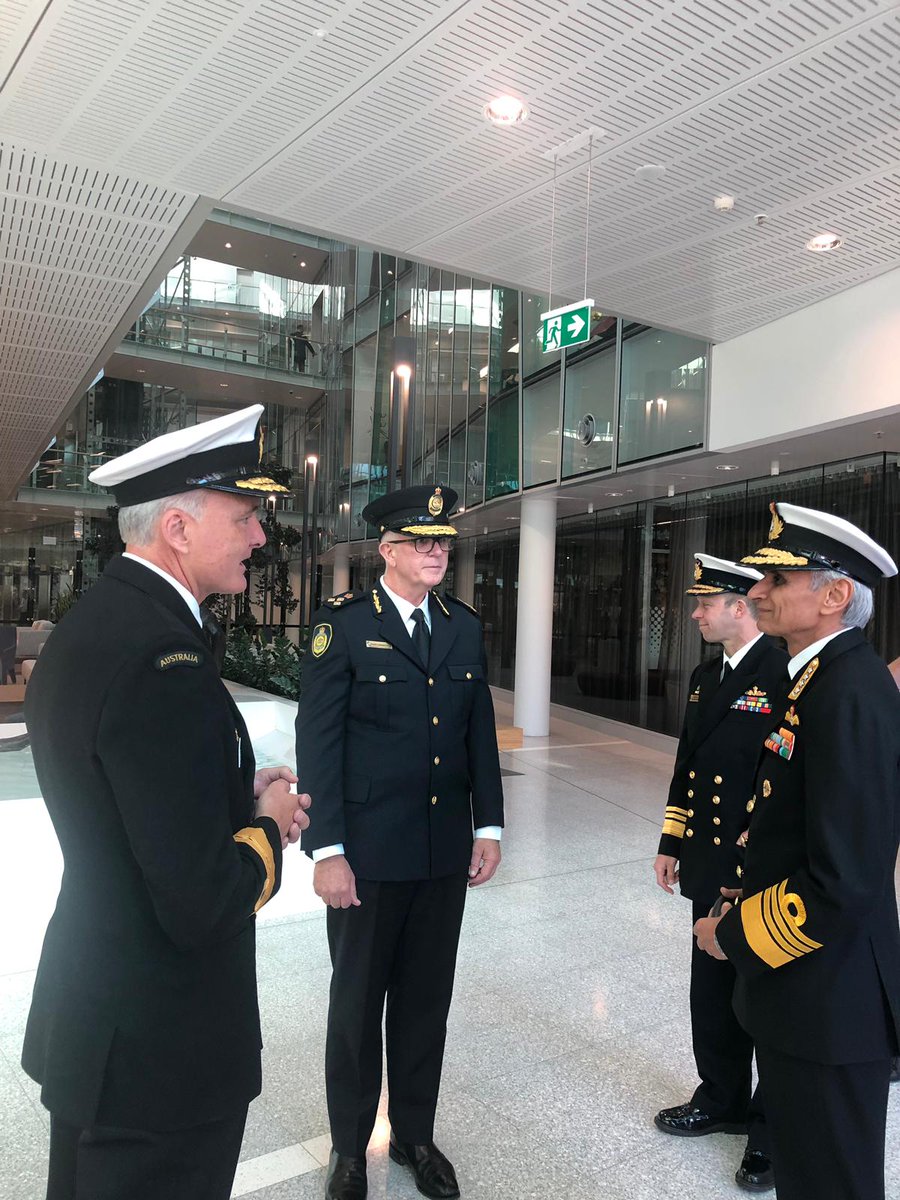The Integrated Distributed Force from the Perspective of Maritime Border Command: The Perspective of Rear Admiral Lee Goddard
During my recent visit to Australia, I had a chance to speak with the Commander of the Maritime Border Command, Rear Admiral Lee Goddard.
He started with the core point that in effect, the command was always operating in many ways in the so-called “Gray zone” in which events in local engagements could become crisis management flash points.
He argued that the Command was configured to do collaborative integration but that as it modernized it was working to shape an integrated force where what some analysts call “tactical decision making at the edge” was a core capability and operational reality.
He noted that the recent meetings of the Australian government in Brisbane with Southwest Pacific partners were designed in part to build the kinds of operative partnerships necessary for the Command to do its job.
The Australian forces need to both understand the perspective of partners, but to understand with whom they needed to work with in incident settings or crisis settings.
He argued that “we need to focus on the source of a particular challenge or problem and to work with partners to resolve the challenge there as opposed to simply dealing with the effect created by that source. To do this, we obviously need to work with the specific partner agencies or capabilities necessary to resolve a mutual challenge, threat or problem.”
He noted that in the Maritime Border Command’s headquarters, they have an operations floor on which the various agencies involved in dealing with the spectrum of operations work together to be able to support or direct operations at a distance dealing with a challenge coming from a regional or maritime source.
“We have on the operations floor representative of Maritime Border Command, Border Command, Customs, Immigration, the ADF, intelligence agencies and members of five eyes, and together we work to tailor support to the particular challenge or problem.”
We then discussed how the Command was looking to shape the Offshore Patrol Vessel to fit into this paradigm and to provide the kind of operational capability they were looking for at sea.
In effect, the evolving C2 and ISR infrastructure being built at the Command was being configured to operate symmetrically with the systems which will be on the OPV, and they are looking for the command element onboard the OPV to make decisions at the tactical edge,
Reachback is being generated through the new combat and C2/ISR systems being configured and built onto the boat, or in other words, to build in an upgradeable C2/ISR infrastructure which can provide reachback and tailored responses to a wide variety of events, threats or challenges.
According to Rear Admiral Goddard, “We are building in new capabilities onto the OPV which will allow it to work with a wide variety of assets, to be able to integrate capabilities for a solution on the fly, including the ability to communicate directly to partners operating ashore in their area of interest or with partner assets in the air or on the sea.”
He underscored that the new asset was being built in effect to fit for purpose, and in this case, it was building a capability able to deliver decision making at the tactical edge.
Thus, it is a microcosm of a broader set of changes occurring in the ADF which are often referred to as building a fifth-generation force.
But the Border Command is both a contributor and a benefactor of this broader change within the ADF.
For Rear Admiral Goddard’s presentation at the recent Williams Foundation Seminar on “Requirements for Fifth Generation Maneuver,” see the following:
Goddard PresentationSee also the following:
australia-builds-its-new-class-of-offshore-patrol-vessels

